Properly draining your sprinkler system is an essential step in maintaining its longevity, particularly before winter arrives. This process helps prevent water from freezing inside the pipes, which can lead to costly damage and repairs.
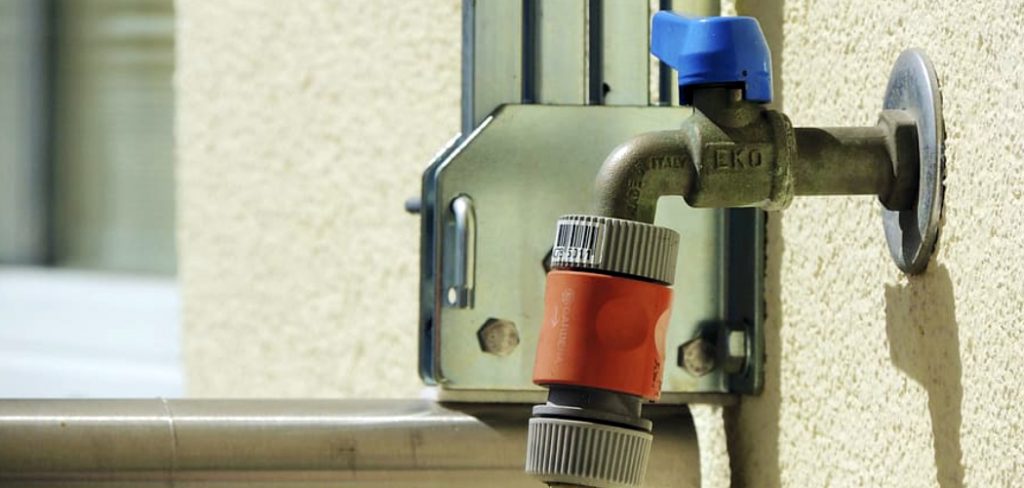
By following a few simple steps on how to drain sprinkler system, you can protect your irrigation system from the effects of cold weather and ensure it functions smoothly when the warmer seasons return. A sprinkler system DIY project can save you money while providing an efficient and customized watering solution for your garden.
Why Drain Your Sprinkler System?
Draining your sprinkler system is necessary to prevent water from remaining inside the pipes and freezing during the colder months. When water freezes, it expands, which can result in cracks and breaks in the pipes. This not only causes damage to your sprinkler system but also leads to leakage and potential flooding in your yard.
Furthermore, any leftover water in the pipes can mix with dirt or debris, resulting in clogs that can impede the proper functioning of your irrigation system. By draining your sprinkler system, you eliminate these risks and ensure that it remains in good condition.
Needed Materials
Air Compressor:
An air compressor is an essential tool for draining your sprinkler system. It uses compressed air to force any remaining water out of the pipes, preventing any potential damage caused by frozen water expanding. You can purchase an air compressor or rent one from a hardware store if you do not own one.
Drain Valve:
A drain valve is a small device that attaches to your sprinkler system and allows you to release any excess water. It is usually located at the lowest point in your irrigation system and should be opened once you have connected the air compressor.
Hose:
You will need a hose to connect the air compressor to the drain valve on your sprinkler system. Make sure the hose is long enough to reach and is in good condition without any leaks.
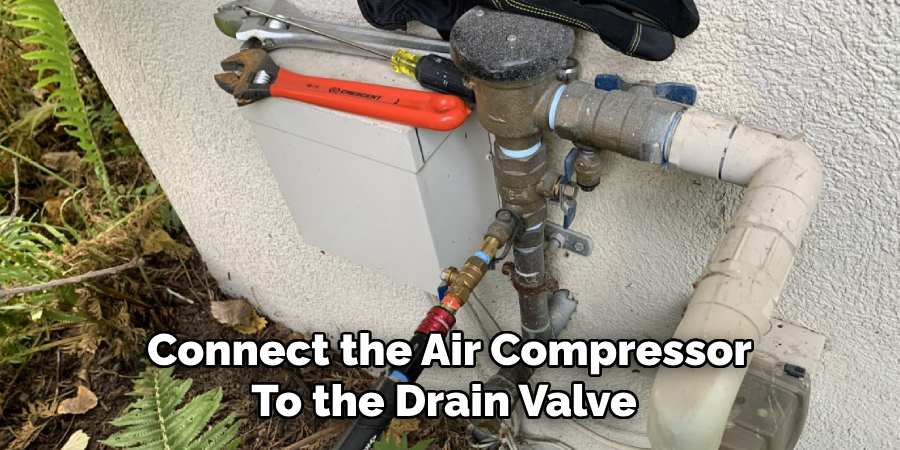
Pressure Regulator:
A pressure regulator is an important tool when using an air compressor to winterize your sprinkler system. It helps control the amount of pressure going into your irrigation system, preventing any potential damage. You can purchase a pressure regulator at a hardware store if one does not come with your air compressor.
Air Compressor Settings:
When using an air compressor for winterization, it is essential to set the pressure to the correct level. The manufacturer’s manual should have recommended settings for winterizing your sprinkler system. Generally, you want the pressure to be between 50-60 PSI (pounds per square inch). Using too much pressure could damage your irrigation system, while using too little pressure will not effectively remove all the water from the pipes.
7 Step-by-step Guide on How to Drain Sprinkler System
Step 1: Turn Off Main Water Supply
The first step in draining your sprinkler system is to shut off the main water supply that feeds into it. This prevents additional water from entering the system while you are working. Locate the main shut-off valve, which is typically found near where the irrigation system connects to your home’s water supply.
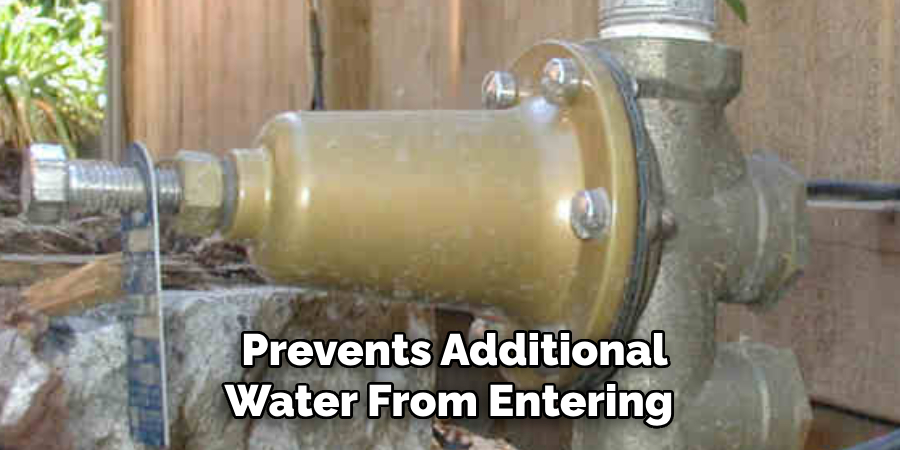
Turn the valve clockwise to close it completely. Ensuring the water supply is off will help prevent any accidental leaks or refilling during the winterization process.
Step 2: Drain the Backflow Prevention Device
Next, you will need to drain the backflow prevention device. This is an important step as it will prevent any water from freezing and potentially damaging the device.
To do this, locate the drain cap on the side of the device and remove it. Allow all trapped water to drain out fully before replacing the cap.
Step 3: Attach a Compressor
After draining both the main supply and the backflow prevention device, you can attach a compressor to your sprinkler system.
Make sure you use an air compressor that is capable of delivering at least 50 cubic feet per minute (CFM) for residential systems or up to 100 CFM for larger commercial systems. Attach the compressor to the main supply line and set it to deliver compressed air at a pressure of 50-80 PSI.
Step 4: Blow Out the System
With the compressor properly attached and set up, you can now begin to blow out your sprinkler system. Start with the zone furthest from the compressor and work your way backward, slowly opening each zone’s valve until water is no longer coming out of the heads.
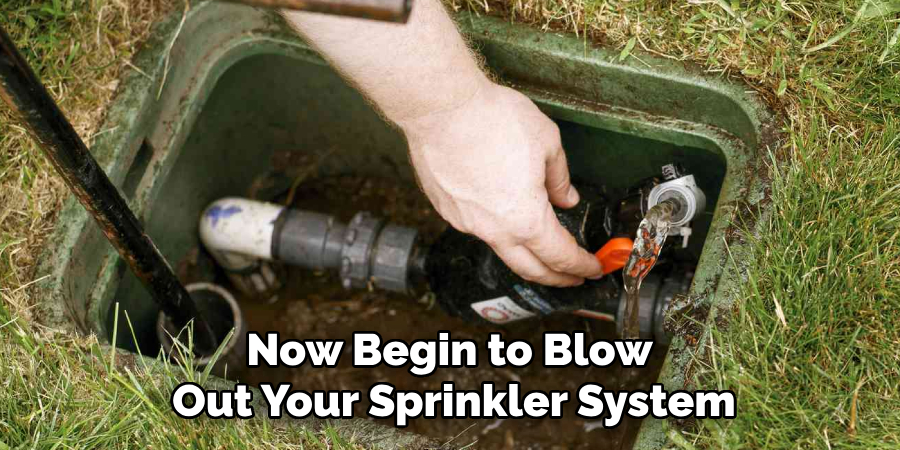
Once all zones have been blown out, go back and repeat this process a second time. This ensures that any remaining water is fully removed from the pipes.
Step 5: Disconnect and Store Equipment
After successfully blowing out your sprinkler system, it is important to properly disconnect and store your equipment. Start by turning off the compressor and unplugging it from the power source.
Next, gently remove the air hose from the sprinkler system’s blow-out port. Be sure to release any remaining pressure in the hose before completely removing it. Afterward, drain all excess water from the air hose by disconnecting it from the compressor and holding one end while allowing water to drain out of the other end. Once drained, coil up the hose neatly for storage.
Finally, make sure to properly store your compressor in a dry and secure location. This will ensure its longevity for future use.
Step 6: Check for Damages
Before storing your sprinkler system and compressor, it is important to check for any damage. Inspect all components of the system, including sprinkler heads, pipes, valves, and connections. Look for any cracks, leaks or wear and tear that may have occurred during the summer season.
If you notice any damage, make sure to repair or replace them before storing the system. This will prevent further damage and ensure that your sprinkler system is in good working condition when you use it again.
Step 7: Properly Store Hoses
In addition to properly storing your compressor, it is also important to store your hoses correctly. Drain any remaining water from the hoses by stretching them out and allowing them to dry fully before coiling them up. Make sure to coil the hose neatly and avoid any kinks or bends that could potentially damage the hose. Store the hoses in a dry location away from direct sunlight to prevent any UV damage. This will ensure that your hoses are ready for use when you need them next.
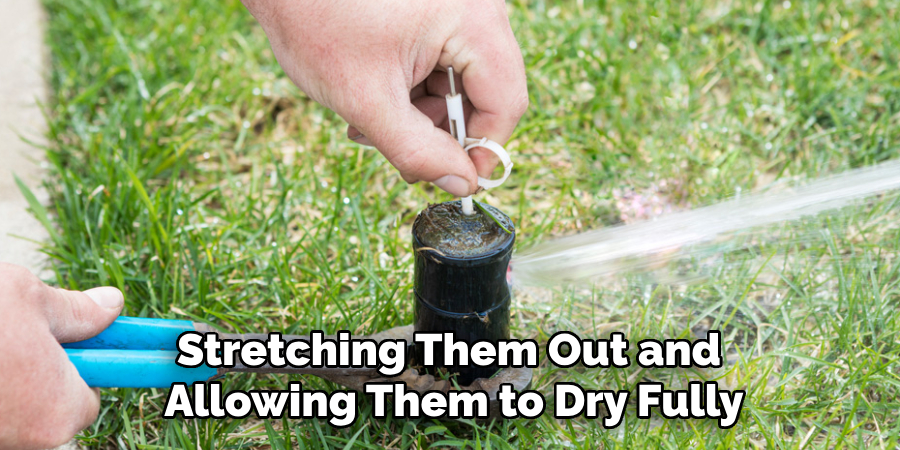
Following these simple steps on how to drain sprinkler system can help prolong the lifespan of your air compressor and ensure it continues to function at its best. By properly maintaining and storing your compressor, you can save yourself time and money in the long run by avoiding potential breakdowns or malfunctions. Additionally, a well-maintained compressor will also be more efficient, allowing you to get the most out of your equipment.
Additional Tips for Winterizing Your Sprinkler System
- Make sure to turn off the water supply to your sprinkler system before draining it. This will prevent any excess water from entering and potentially damaging your air compressor.
- Clean out any debris or dirt that may have accumulated in your sprinkler lines. This will help ensure that the lines are fully drained and not clogged.
- Use a shop vac or air compressor to blow out any remaining water from your sprinkler lines. This will help remove any excess moisture and prevent potential freezing damage during the winter months.
- Consider investing in an insulated cover for your backflow preventer, as this is a common area for freezing and damage during the winter.
- If you have an underground irrigation system, make sure to blow out any remaining water from the pipes using a special air compressor attachment that is designed specifically for this purpose. This will help prevent any potential freeze damage to your irrigation lines.
- It’s also important to properly winterize any outdoor faucets or spigots. Shut off the water supply and drain any excess water by opening the faucet until it runs dry. Consider installing a protective cover over these outdoor fixtures to further protect them from freezing temperatures.
- Don’t forget about your hoses! Make sure to disconnect, empty, and store them in a warm and dry place before winter hits. This will prevent any damage to the hose and ensure it is ready for use in the spring.
Frequently Asked Questions
Q1: Can I Leave My Outdoor Faucets On During Winter?
A1: It is not recommended to keep outdoor faucets or spigots on during winter as it can lead to freezing and potentially costly damages. It is best to winterize them by properly draining and insulating them.
Q2: What is the Best Way to Protect My Sprinkler System?
A2: The best way to protect your sprinkler system during winter is to drain it fully and shut off the water supply. This will prevent any remaining water from freezing and causing damage to the pipes or components. Additionally, you can also use a compressor or air pump to blow out any excess water from the system.
Q3: Should I Cover My Outdoor Faucets During Winter?
A3: While covering outdoor faucets may provide some additional protection against freezing temperatures, it is not a foolproof method. It is still recommended to drain and shut off the water supply to outdoor faucets fully during winter to prevent damage. The best way to protect your home’s plumbing system during winter is to take proper precautions such as insulating pipes, draining unused water sources, and shutting off outdoor water supplies.
Conclusion
Properly preparing your home and outdoor spaces for winter is essential to preventing costly damage and ensuring everything is in good condition when warmer weather returns.
By taking the time to follow these simple steps on how to drain sprinkler system, you can protect your property and enjoy peace of mind throughout the colder months. Remember, a little effort now can save you significant time and expense later. Stay prepared and stay warm!
–
About the Author
Adrian Green is a passionate woodworking enthusiast who has dedicated his life to the craft of woodworking. From his early days working alongside his father in the family woodworking shop, Adrian has honed his skills and developed a deep love for creating beautiful, functional pieces with his hands. As the voice behind The Woodenify Blog, he shares his knowledge, tips, and inspiration with fellow woodworkers of all skill levels, helping them build confidence in their abilities while learning new techniques.
Professional Focus
- Specializes in DIY woodworking projects, from furniture making to home décor.
- Provides step-by-step guides, tips, and practical tutorials for woodworkers at any skill level.
- Focused on empowering readers with confidence and knowledge through easy-to-follow instructions and hands-on techniques.
- Passionate about building a community where makers can share, learn, and grow together in the world of woodworking.
Education History
University of Craft and Design – Bachelor of Fine Arts (BFA) in Woodworking and Furniture Design
Woodworking Apprenticeships – Gained extensive hands-on experience through various workshops and mentorships with seasoned craftsmen, refining carpentry and furniture-making skills.
Expertise
- DIY woodworking, carpentry, furniture making, and home décor projects.
- Creating clear, accessible tutorials and guides for beginner to advanced woodworkers.
- Helping readers experience the satisfaction and fulfillment of turning raw materials into stunning finished products.
